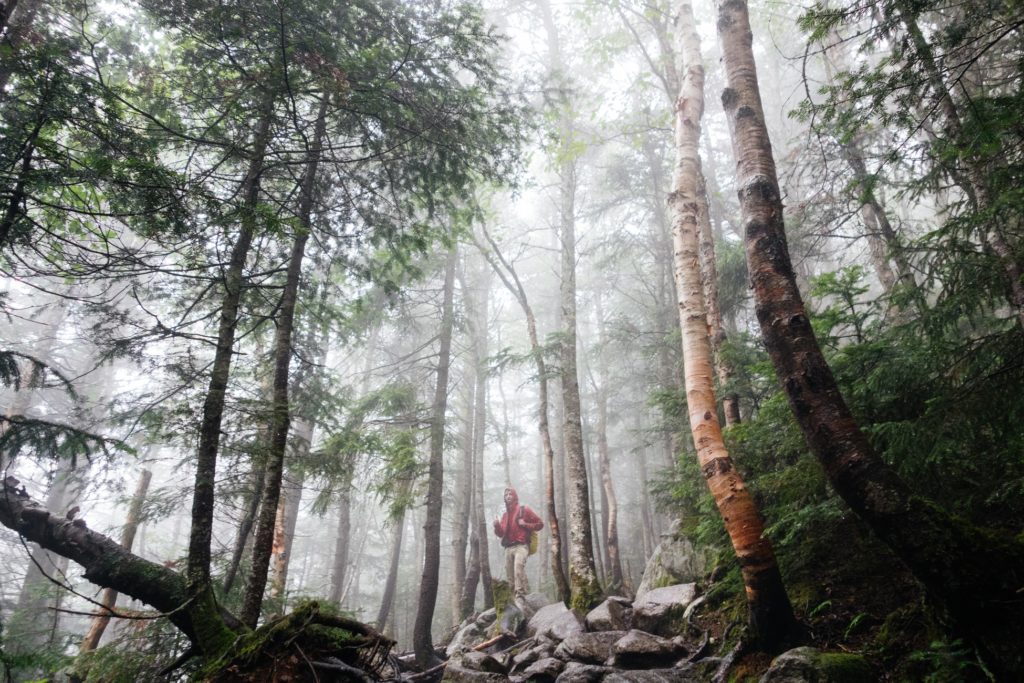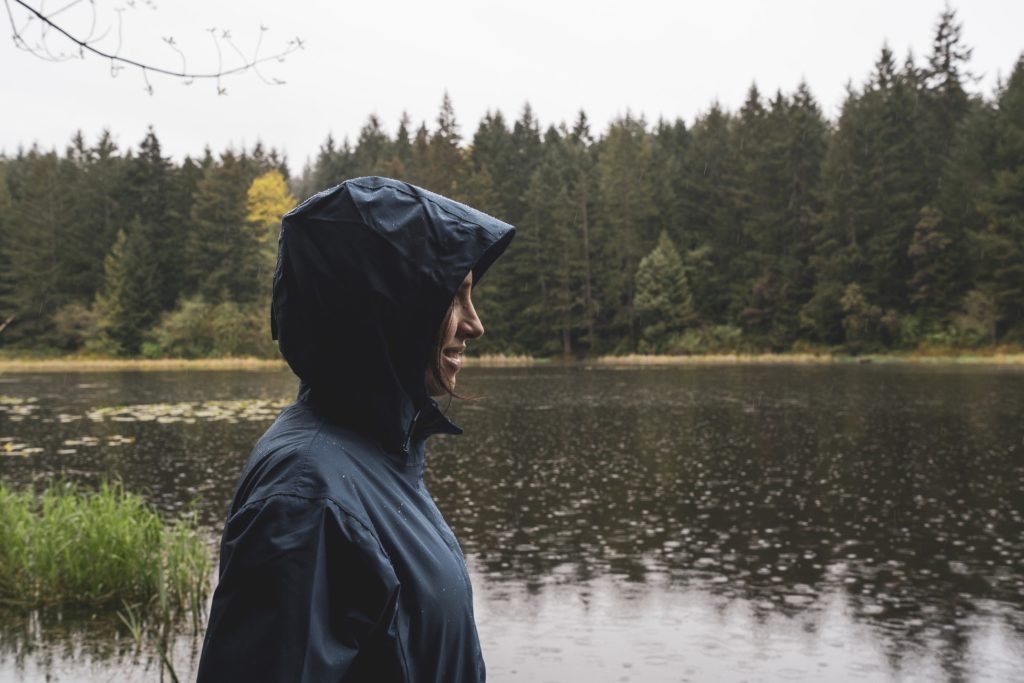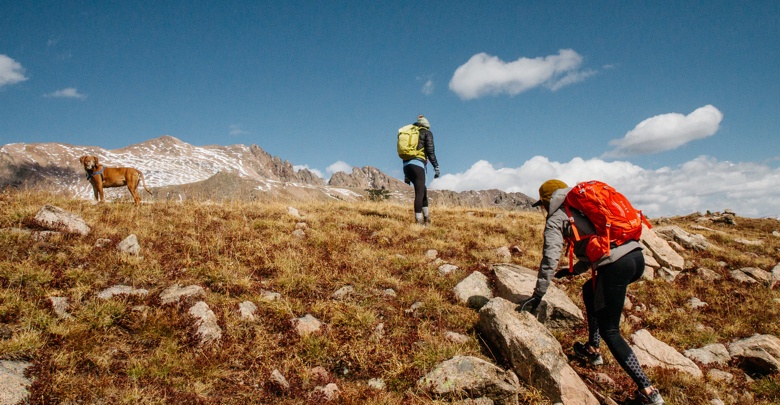Heading out on the trail and looking to know how much ground you can cover backpacking or hiking? In this article, I’ll get straight to the point and then go over the main variables that affect how fast or slow you’ll be moving.
As a general guide, the average fit hiker can cover 3 miles per hour (5kph) forward, plus one extra hour for every 2,000 feet (600m) climbing upwards.
The exact distance you can cover will be down to how difficult the terrain is, how heavy your backpack is, your fitness level and how often you stop for breaks. On flatter ground and wide open trails, you’ll be able to travel a lot faster than rocky ascents in the rain.
How to calculate the distance you can hike?
To calculate how long it will take you to hike a trail you will need to know the length of the trail, you average hiking speed and the altitude gain. Everyone hiking speed is slightly different but a good average is 3-5kph depending on your fitness and the difficulty of the terrain.
To calculate how far you can walk in one day you simply take the distance of the hike divided by your average hiking speed:
Distance / Hiking speed + Breaks
If you’re hiking at an average speed of 3kph along a 9 km route you’re on the back of the envelope calculation would look like this: 9km / 3kph = 3 hours.
Based on your average speed, this is the minimum amount of time that you would expect the hike to take. This does not account for breaks and changes in speed.
We can account for altitude climbing by using Naismith’s rule where we add 1 hour every 600m of ascent (more on this later).
What makes you faster or slower?
Your fitness level
The fitter you are the faster you’ll be out on the trail. Core strength, leg strength and stamina will give you a faster natural walk and you’ll have no trouble reaching 3-4mph on decent terrain.
How heavy your backpack is
A good rule of thumb to follow is to aim for your backpack to be no heavier than 20% of your body weight when backpacking and no heavier than 10% when day hiking. For example, if you weigh 150 pounds (68kg) then you’d want a pack weighing less than 30 pounds (13kg) for backpacking or 15 pounds (6kg) for day hiking.
A heavy backpack will weigh you down and make each step that much more challenging. Luckily for us, gear is getting lighter and lighter due to advances in materials. Although lighter gear is more expensive, it will help you keep your pack weight down considerably when you add everything up that you need to bring.
The difficulty of the terrain
Every hike has a unique path. The more challenging the terrain, rocks, loose grit or narrow paths – the longer it will take you and you’ll need to factor this into your calculation.

The altitude ascent
Using Naismith’s rule developed by Scottish Mountaineer William Naismith – we can calculate the extra time required to walk uphill.
The formula says that for every 600m (2,000 feet) of ascent we should add an additional hour.
Or 1 minute extra for every 10 meters of uphill. Of course, steeper sections will be much slower and small inclines much easier – but as a general rule it works out remarkably well.
If our hike was 10km long with an altitude climb of 600 meters and we are hiking at a speed of 5kph we can come up with the following calculation.
- distance x walking speed = 2 hours
- + 1 hour of uphill = 3 hours minimum total time.
The rule assumes you’re a hiker of reasonable fitness on typical terrain and under normal conditions – and can be considered the minimum amount of time you’ll need to complete the route.
In practice, walking groups usually rely on calculating the speed of the slowest person.
The weather
In wet and windy conditions each step requires more effort and precision. The ground may be slippery or a blowing gale may be pushing you off balance.
It’s better to go slow and steady then risk spraining an ankle or falling. Always check the weather reports before you head out on the trail and be prepared with the right clothing in case the heavens open.

How many breaks you have
If you stop every 15 minutes to take a breath or munch on some granola bars then the time will add up and quickly eat into your time. Breaks are all part of the fun, but take account of how many you’re having and make sure you have enough time to get to your destination before the sun sets (unless you prepared with a headlamp for night walking).
Your hiking goals
Your final speed will all depend on your end goal. If you have to get somewhere by a certain time or have a very set schedule then hiking at a minimum certain speed will be required.
If on the other hand you can setup your tent whenever you like or you’re not bound by deadlines then you can go much slower.
At the end of the day, hiking is for fun and you shouldn’t be stressed about how fast or slow your moving. Set yourself goals and enjoy the journey.
If you’re keen on learning some top tips on how to hike faster then read on.
Tips to hike faster
1. Use hiking poles
Hiking poles provide extra support and stability when climbing on loose ground. Poles are popular and there is evidence that they help protect your knees and give you an extra boost on the trail.
I’ve hiked many times with and without poles and there are definitely some pros and cons.
I find that poles give my stride a real determination and I feel a definite improvement in my posture. For shorter day hikes I won’t generally use poles, but for longer multi-day trips I find poles to be really helpful.
2. Stay hydrated
Making sure you’re drinking enough water is really important and is key to giving you more energy and focus.
Always carry enough water with you – expect to drink 0.5-1 liter (2-4 cups) of water an hour but more than this in hot weather. I recently wrote about how much water to bring with you and how to manage your supplies for longer trips.
Most hikes will have a water source along their route and a great way to save weigh in your pack is to bring a portable water filter with you. Water filters are lightweight and allow you to drink from streams and creeks as you hike. Filters will eliminate bacteria, protozoa, and particles from the water while more advanced purifiers will also remove viruses – which is more important in higher risk areas.
3. Carry less gear
It’s important to be prepared on the mountain, but getting your pack weight down is crucial if you want to hike faster and further each day.
Take out unnecessary items and invest in durable but lightweight gear.
Final thoughts
The average hiking speed is 3 miles per hour (5km) on flat descent terrain. When you account for breaks, inclines and your fitness level the true distance you can cover may be less.
Always estimate the distance you can cover based on the slowest person in your group and be mindful of how many breaks you’ll need.
Remember don’t get caught out with the sun setting before you back at camp without a headlamp.
Enjoy the journey 🙂





